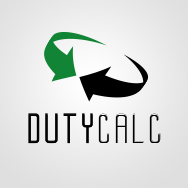Global Market Trends and Duty Drawback
Duty Drawback Software | Import Export Consulting | Processing Filing | Full Service
Global Market Trends and Duty Drawback
In an era where global market dynamics oscillate with the rapidity of shifting sands, businesses find themselves at the mercy of a complex web of factors that affect their operational strategies, particularly in the realm of international trade and logistics. Among these strategies, the concept of duty drawback, an often underutilized financial boon, stands out for its potential to significantly mitigate costs. Understanding how global market trends, such as the relocation of manufacturing hubs or the renegotiation of trade agreements, impact duty drawback strategies is essential for companies aiming to stay competitive and maximize their returns.
Duty drawback, in essence, is a refund of customs duties paid on imported materials that are subsequently exported or used in the manufacture of exported goods. As global manufacturing landscapes evolve, with businesses increasingly moving their production lines to countries with lower labor costs or more favorable trade conditions, the implications for duty drawback strategies become multifaceted. For instance, the shift of manufacturing hubs from traditional powerhouses like China to emerging markets in Southeast Asia or Africa can open up new avenues for claiming duty drawbacks, given the different tariff structures and trade agreements in place.
Moreover, changes in trade agreements directly influence duty drawback opportunities. The renegotiation of trade deals, such as the United States-Mexico-Canada Agreement (USMCA), which replaced NAFTA, introduces new rules and provisions for duty recovery. Businesses must stay abreast of these changes to navigate the complexities of duty drawback claims effectively. These agreements often stipulate the criteria and processes for claiming drawbacks, which can vary significantly from one trade pact to another, affecting the amount of duties that can be recovered.
Adapting to these global market trends requires a proactive approach. Companies should invest in robust trade compliance programs and foster relationships with customs brokers and consultants who specialize in duty drawback claims. Leveraging advanced analytics and trade management software can also provide businesses with the insights needed to optimize their duty drawback strategies in line with shifting global trade landscapes.
Furthermore, staying informed about global trade developments is paramount. Companies that closely monitor shifts in manufacturing bases and changes in trade agreements will be better positioned to adjust their supply chain strategies, ensuring that they can capitalize on duty drawback opportunities as they arise.
As the global market continues to evolve, so too must the strategies businesses employ to navigate its challenges. By understanding the impact of these shifts and adapting their duty drawback strategies accordingly, companies can not only safeguard their bottom lines but also seize competitive advantages in an ever-changing international trade environment.





